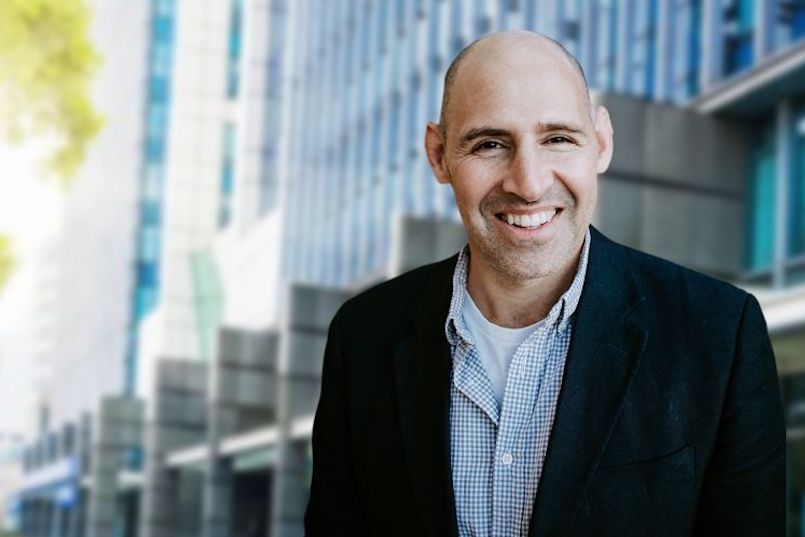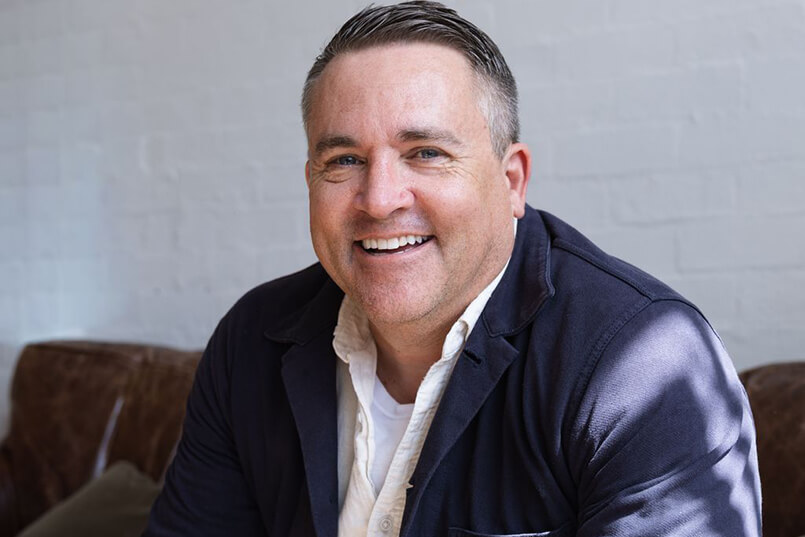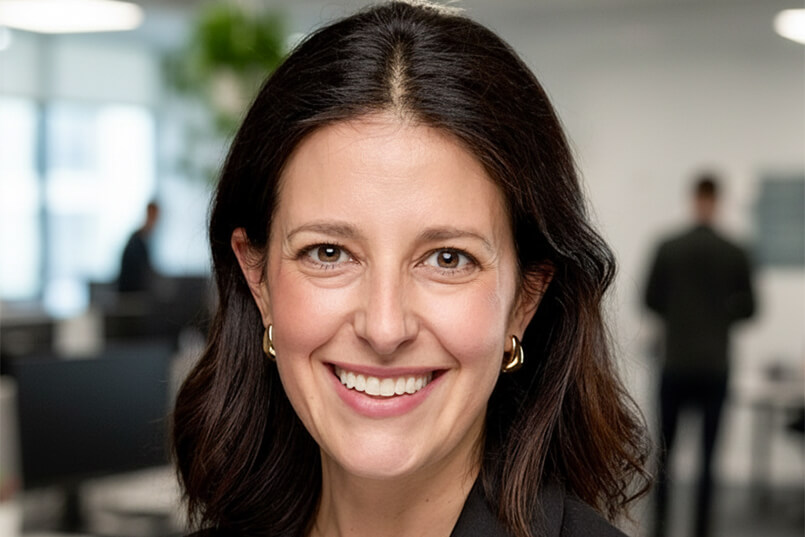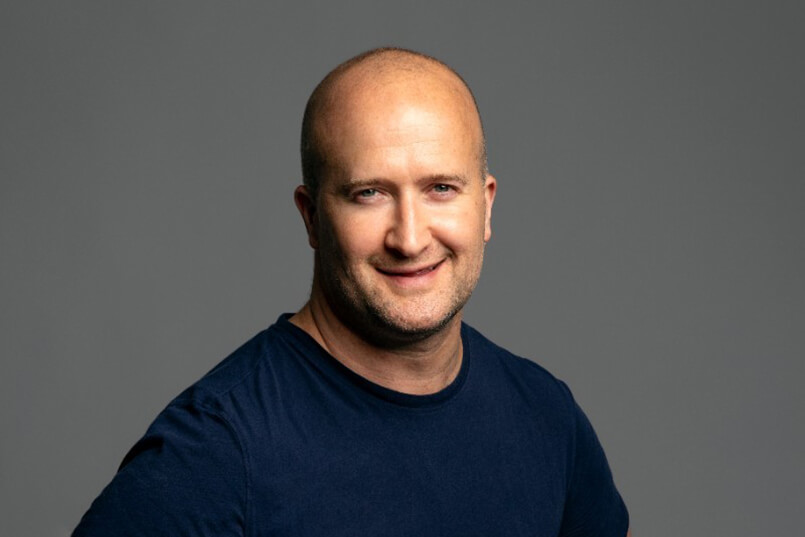Nick Hockley is the Chief Executive of the ICC T20 World Cup in Australia. He talks about the changing face of sports sponsorship and the increasing opportunities for organisations to become involved in engaging communities by going beyond naming and signage rights in their sponsorships. He highlights the insights from his involvement from the London Olympics and Paralympics in 2012, a signage and naming-right free event. And champions the opportunities of the ICC T20 World Cup, particularly the Women’s Series that culminates with the final on International Women’s Day.
You can listen to the podcast here:
Follow Managing Marketing on Soundcloud, TuneIn, Stitcher, Spotify and Apple Podcast.
Transcription:
Darren:
Welcome to Managing Marketing, a weekly podcast where we discuss issues and opportunities for marketing media and advertising with industry thought leaders and practitioners.
Today I’m talking with Nick Hockley who is the chief executive of the ICCT 20 World Cup. And that’s for men and women isn’t it? Welcome, Nick.
Nick:
Thank you for having me, Darren; it’s great to be here.
Darren:
It’s a fascinating area because sports sponsorship and especially big event sponsorship is something everyone is aware of but it has actually changed a lot hasn’t it over the years?
Nick:
I think it has. And I think sports events are becoming bigger and marketers are becoming much more sophisticated. Events are looking to partner with partners across the board that actually buy into the purpose of the event’s mission.
When we talk about partners for the ICCT 20 World Cup we think very broadly. We don’t just think about commercial partners, sponsors, and our broadcasters who are obviously very important but we think about our government partners, host city partners, and the venues.
Venues now, in Australia, are magnificent and in many ways they are fantastic marketing partners as well as event delivery partners. It’s thinking very broadly about what does partnership mean and how everyone can get involved.
Darren:
It is about the contribution of each of these partners, the sum of each of these is greater than the individual parts. As chief executive you’re looking for those partnership relationships that add together so that everyone gets rewarded.
Nick:
I think that’s right. It goes back to the opportunity for the event or hosting country and then looking at the broader purpose, the why are we hosting this major event. In the context of the T20 World Cups in Australia in 2020 we were very fortunate to have our eyes open to the possibilities of what a cricket event can achieve.
Australia and New Zealand co-hosted the men’s 50 over World Cup back in 2015, which was a fantastic event and I was very privileged to be involved in that. If you think about the T20; we’ve got the female and men’s events and we’ve also got the format of the game, which has been cricket’s way of bringing in the youngsters.
Darren:
The T20 is for many people the exciting visual game isn’t it? And we’ve also seen a phenomenal growth in women’s cricket in this country so give us a précis of the 2020 programme.
Nick:
When Australia was awarded the event back in 2014 both the women’s and men’s were due to be played at the same time. We had a good look at other major sports events around the world: the FIFA women’s World Cup in Canada 2015, the Netball World Cup and we really thought that the Women’s World Cup should be played as a major world event in its own right and time slot.
The women’s T20 World Cup is being played right around Australia; 10 teams in 23 matches culminating in the final on the 28th of March (International Women’s Day at the MCG).
Darren:
Fantastic.
Nick:
Then the men’s is later in the year; October, November, 16 teams playing a total of 45 matches all-round the country with the final at the biggest cricket ground in the world, Melbourne.
Darren:
We call it the MCG but most people forget that stands for Melbourne Cricket Ground. It’s not your humble suburban cricket ground is it? It’s a world class stadium.
Nick:
It’s an incredible stadium. Each of the stadiums around the country bring their own unique dimension. The new Perth stadium, which is now the 2nd biggest cricket venue in the country, in terms of technology and a T20 venue, there is nothing like it on the planet so we’re very excited to show that off to the world.
Darren:
And why is it called T20?
Nick:
So, it’s 20 overs a side. In simple terms it’s taking a game that can last 5 days in its purest form (test cricket) and playing that in the same length as a football match. The game lasts 3 hours. The games are played in the afternoons or under lights and there’s lots of music, fireworks and loads of entertainment and you see a result within 3 hours. It’s really the format that appeals to the broadest demographic.
Darren:
The cricket diehards would say the format has sold out to the TV networks because the shorter format, music, lighting is really making it a TV event but it is still very much a live event isn’t it? You get audiences really participating in that extravaganza.
Nick:
Absolutely. As T20 cricket matures, it is becoming clearer that every format has its role. The test matches are for the aficionados, and you’ve got the one-day, the 50 over, which is the pre-eminent format where you see a result in a day but it’s long from cricket.
And then you’ve got the T20, which has really come of age. For the first time, in 2020, it will be called a World Cup. Previously, it was called the World T20. It’s the way non-traditional cricketing countries can play on the world stage.
In the women’s event Thailand have just qualified for their first T20 World Cup having only taken the sport up 12 years ago. In the men’s, Afghanistan have qualified ahead of Sri Lanka and they’re relatively new on the scene. We’ve got some incredibly talented players coming through and a really good supporter base here in Australia.
It’s serving 3 main purposes; 1. getting more kids into the game, 2. it is the pre-eminent form of the game for women and girls, and 3. its’ the means by which cricket is breaking outside its traditional Commonwealth boundaries to be played all round the world.
Darren:
You mentioned before that there are 20 teams for the men’s and 10 for the women’s.
Nick:
What’s interesting here in Australia, in our increasingly multicultural society is there are new and growing communities supporting each of the competing teams and rarely do they get an opportunity to show their support for their or their parent’s country of birth. In terms of celebrating all of those communities and getting them behind their team that is for us a really exciting opportunity.
In the beginning we thought very hard about why are we putting this event on and we simplified it down to major events are about bringing people together but these events in particular are about bringing generations (little kids and their grandparents) and cultures together.
So you’ll see through our promotion and the event incredible festivals with all the different cultures coming out and celebrating in the way only they know how.
Darren:
With an event of this size and travelling around Australia, I imagine it will be logistically incredibly complex. But that would also create a lot of opportunities wouldn’t it for participation? Not just audience participation but the partners you’ve brought on board for them to find ways of participating in that event.
Nick:
Absolutely. And the starting premise is how can we take the women’s and men’s event to as many people as possible by playing the matches as far and wide as possible across Australia within the confines of what’s logistically possible.
The Australian teams in both events are not playing a single game in the same city; they’re having to travel around and play a game on average every 2.5 days so it’s a particularly gruelling schedule for all of the teams. It means that if you’re in a city like Perth or Adelaide you’re going to see 7, 8,9 or 10 of the best teams all come through your city during the tournament so that was the starting premise.
By making it a nationwide event the aim is to get everyone swept up and behind it and it’s very attractive to partners being a national event. I don’t need to tell you about the Australian sporting landscape but historically the rugby codes have had their own geography and the same with footy in the southern states.
Cricket is Australia’s only national and international sport. We’ve pushed really hard to take it far and wide across Australia.
Darren:
A lot of marketers would look at sporting and entertainment events; there are a lot of opportunities and people out there for sponsorship dollars and often it gets reduced down to broadcasting or signage rights at stadiums and things like that. But I believe you’re also trying to extend this into the communities.
Nick:
That’s right. Before coming to Australia I had the great privilege of working on the London Olympic and Paralympic Games back in 2012 and it’s a bit like Wimbledon, The Masters and a few other sporting events that don’t offer any of those signage rights; it’s purely the opportunity to associate ones brand with the event in their own marketing.
Studying events in that context does really ask you to think about why and what a particular brand is looking to associate themselves with. For us the 2 dimensions are 1. advancing the game as a sport for women and girls. From the outset we had to think really big.
The acceleration we’re seeing in sports for women and girls is really well documented. We have this moment in time, 2020, when we have a world cup and how can we maximise that. We’ve done it on a number of fronts but certainly we have an opportunity with the final on International Women’s Day.
If we filled the MCG we have the opportunity to set a new benchmark for the highest attendance at any sporting event in history. If you think back to Billie Jean King when she was advocating for fairer balance of pay for women players she coined the phrase, you can’t be what you can’t see. So, the notion of the biggest packed cricket stadium in the world on International Women’s Day celebrating the best players in the world can send a very strong message certainly across Australia but also other parts of the cricketing world where they’re further behind on the gender equality journey.
It could be a really popular celebration of the world we all want to see for our kids.
Darren:
It will certainly be an amazing showcase. Women have played cricket and other sports for a long time but it’s only in relatively recent times that we’re seeing broadcast exposure, that broadcasters are realising there is quite a lucrative audience and also getting the general public to come out.
We’re having this conversation in north Sydney and just up the road here we’ve had some phenomenal crowds turn out especially for women’s cricket. Is that something that has been planned? Or is it an idea whose time has come?
Nick:
I think it’s righting what has effectively been a period of discrimination for a long long time. It’s only getting back to what it should be. I’ve got 2 little girls and I was at a school visit and presenting on the T20 Cup to the junior school and they don’t wear the same gender glasses we do.
So they look up to the likes of Ellyse Perry, Alyssa Healey, and Ash Gardner and they just see them as the best cricketers in the world but it’s a really exciting time to be involved. Our responsibility, particularly where you’ve got a one-off major event, is to do everything we can to leverage this opportunity.
Are you familiar with the writings of Malcolm Gladwell, The Tipping Point? We are seeing this momentum and change happens very quickly so how can we be a catalyst to really accelerate that change. That’s really fed our thinking throughout the whole project.
Darren:
You mentioned the Olympics and 2020 is the next Olympics but it doesn’t conflict with you does it? It’s northern hemisphere summer so you’ll be before and after.
Nick:
It’s between the women’s’ and the men’s event—right in the middle—so a very exciting year for sport. Certainly Japan has embraced these major events. Speaking to friends and colleagues who went to the recent Rugby World Cup in Japan, the way the entire country got behind that event was absolutely incredible. If we can achieve that in 2020 for cricket it will be fantastic. Everyone I’ve spoken to who went to that Rugby World Cup have said, ‘absolutely, we’re going back for the Tokyo 2020 Olympic Games because the welcome the Japanese people gave, the service, and the experience was magnificent’.
We’re looking for the event cities across Australia to give the same warm welcome to what we hope will be 10s and 100s of thousands of people coming for the T20 World cup.
Darren:
You’ve been involved in sporting events, sports sponsorship and the marketing of those events for a very long time, what approach should marketers take to get the best value? We have marketers come to us and say here’s a sponsorship deal and this is what we’re going to get, this is the cost and is that good value?
Have you seen examples of where marketers are able to get great value and not just turn it into a negotiation on cost?
Nick:
There are a few things. Firstly, thinking really broadly around the partnerships, not just relying on the sporting property to say here are the assets—that’s the investment but running it through the entire business. That really needs to start with a fantastic fit. It’s also really important that the partner plays a role.
I’ll give you an example where Adidas were the partner; they did all the team kits and volunteer’s uniforms and very early on they wanted to branch out from athletics and swimming and reach new people that might not necessarily be that into sport and their association with Stella McCartney, who designed a lot of the gear and taking that game to a broader audience. They had a very clear how as to the why.
It requires both parties to sit down and say what are we trying to achieve? If it works for both parties not just one that’s when the haggle over rights fees goes away because everyone has got a demonstrable return on investment.
Darren:
It’s where you grow a bigger pie so everyone gets a bigger slice. You’re talking about moving beyond media measures. Often the conversation around sports sponsorship is ‘what’s the broadcast exposure, the ticket sales?’—a traditional media measure but you’re talking more about brand activation.
It’s how can we use this property strategically to achieve an objective but also add value?
Nick:
Absolutely and we saw another great example at the last T20 World Cup in the West Indies in 2018 where Uber were a partner. They got behind a campaign where the male players were cheering on their female counterparts playing in the World Cup and encouraging people to tell stories about when they’ve smashed their barriers and achieved their goals. That was a very well activated campaign, which showed that their brand was not just male drivers but female drivers, that they’re a company that’s trying not to have a gender bias in any way.
Darren:
And they demonstrated or highlighted that through the sponsorship. I’ve got friends who are in music marketing and they always say they look for the money cart buy opportunity, that certain events like the T20 can just offer that would never be available otherwise.
Have you been open to those sorts of approaches from marketers coming to you and saying this is our strategic objective and then working with them to come up with the money cart buy solution? You don’t have to name names.
Nick:
A lot of those discussions are ongoing but certainly how brands participate in the event, there are various opportunities that people can take advantage of. The challenge is always what can be done within the logistical confines of the event.
The T20 World Cup is looking to provide a level of exclusivity. We thought really big in terms of the event. For the final we absolutely wanted to have a world level music act come and perform with a strong gender empowerment focus. It became very evident through those conversations that we made a top 10 list of people we wanted and then went to our preferred. And we’re delighted that Katy Perry has agreed to come and perform.
Obviously, she’s one of the most followed people in the universe but equally she appeals to the demographic we’re looking to target but also a broader demographic and people understand her message. All of our partners from around the world were in Sydney 2 weeks ago and it’s encouraging them now to think big.
What that looks like in the context of their business and what are we going to do in the context of our business to celebrate where we are in terms of gender equality. But not just the marketing team thinking about it but tying in with diversity and inclusion objectives and then encouraging their clients and customers to be thinking about that too.
Again, it all ties back to the why, which is a singular vision and purpose and if those visions and purposes are aligned it’s a case of asking how big can we think.
Darren:
There are a lot of global sporting events. The Olympics is every 4 years, there’s the Rugby World Cup, the soccer World cup and this World Cup is also every 4 years isn’t it?
Nick:
It has been every 4 years but the women’s is every 2 years.
Darren:
There’s an argument that with a 4 or 2-year gap it’s very hard to get the consistency. Do you see this as the opportunity for a kick-off for a longer term? For me, KFC in Australia, has absolutely cemented itself (this is fried chicken) as part of cricket in Australia with all their promotions that are part of the game but are also periphery to it; the buckets on the head, caps and things like that.
Are we likely to see similar things here, not necessarily with KFC? Could this be the launch for some of your partners into longer terms relationships.
Nick:
Because it’s a world event that just happens to be happening in Australia the brands involved tend to be more global.
Darren:
They sell KFC in a lot of countries. I get what you’re saying; it is a global event.
Nick:
From that perspective it really is. While KFC have cemented themselves as part of the big bash the same could be said of a number of the global partners at a global level. Really what delivers the eyeballs on these events is context. This is the one all the players want to win.
Australia has never hosted the T20 World event before (it’s like a home Olympics) so from that perspective we have a number of more Australian-based brands wanting to get involved. The challenge becomes the ICC is selling them on a global basis and so it’s whether we can get there.
There are certainly some very exciting partnerships in the wings and some exciting marketing plans that I can’t share with you today but I look forward to celebrating with you when they’re public.
Darren:
We don’t have long to wait do we?
Nick:
The women’s kicks off Friday 21st February; Australia versus India.
Darren:
Even closer.
Nick:
Sydney Olympic Park at Sydney Showground Stadium. We talked about Katy Perry but headlining the opening match we’re going to have 5 fantastic up and coming performers really representative of Australia’s culturally diverse community. That’s going to kick the whole thing off with a bang.
The Australian women’s team are defending champions and most would say favourites but I know India have got really big ambitions this time around so that’s certainly a match the Aussies are worried about.
Darren:
It sounds really exciting. You’ve literally been planning this for 5 years?
Nick:
We were awarded the event 5 years ago. The planning in earnest has been 3 years but the fantastic thing about major events in Australia is that the talent across the board is incredible. All of our packages; marketing, schools programme, ticketing platform we’ve gone out with global tenders and with one exception all our packages have been won by Australian-based predominantly independent companies.
And that’s before you even start talking about the venues, which are just incredible. I think the fact that the venues are run as footy grounds in the winter but also are major conference facilities means the infrastructure and expertise and experience is phenomenal.
And we’ve also had incredible support from government at every level; federal level, Tourism Australia have run their own campaign around the T20 World Cup—they haven’t run a specific event campaign like that since the Sydney Olympics. And we’ve had phenomenal support from all the State and territory governments as well.
At this point we’re about 70 days out from the tournament; it’s just really humbling to see all of these incredible agencies and partners doing incredible work and really the role of the organising committee is the conductor of the orchestra but there are some phenomenal musicians out there doing incredible work and are going to bring it all to life.
Darren:
This means 2020 is shaping up to be a year of sport. If anyone is not interested in sport they’re really going to struggle to avoid it. We’ve got 2 big T20 events, the Olympics along with all of the other sports that run throughout the year; we’ll still have the rugby, AFL, soccer. It’s going to be a very busy year.
Nick:
If you don’t like sport you can still come and enjoy the T20 World cup because it’s going to be a celebration of community, culture, music, dance so come and have a look. An investment of 3 hours of your time and you might quite enjoy the game as well.
Darren:
We really appreciate you making the time because I can imagine your schedule, with so few days left before the kick off, must be incredibly busy. Thank you for coming in and having a chat.
Nick:
Thank you very much, Darren, great talking to you.
Darren:
One last question: who’s going to win the World Cup?
Ideal for marketers, advertisers, media and commercial communications professionals, Managing Marketing is a podcast hosted by Darren Woolley and special guests. Find all the episodes here




